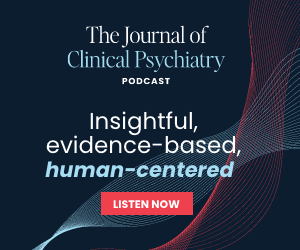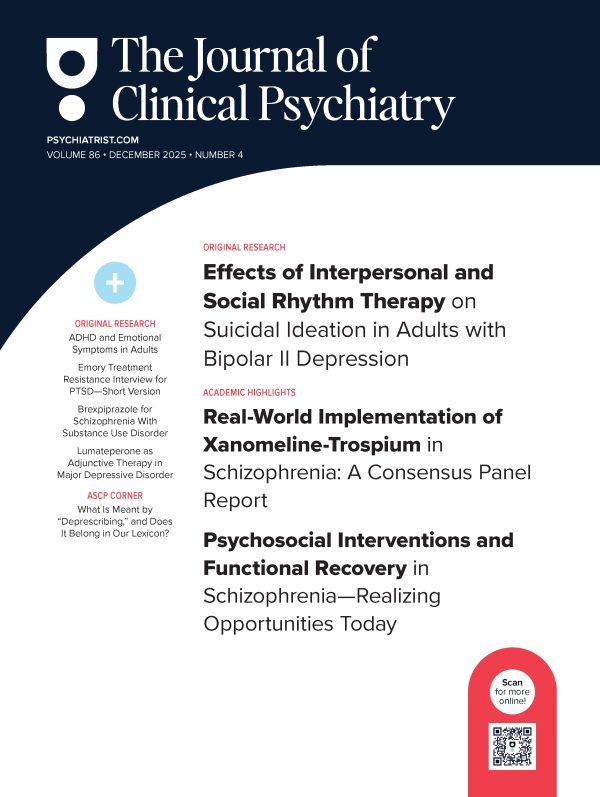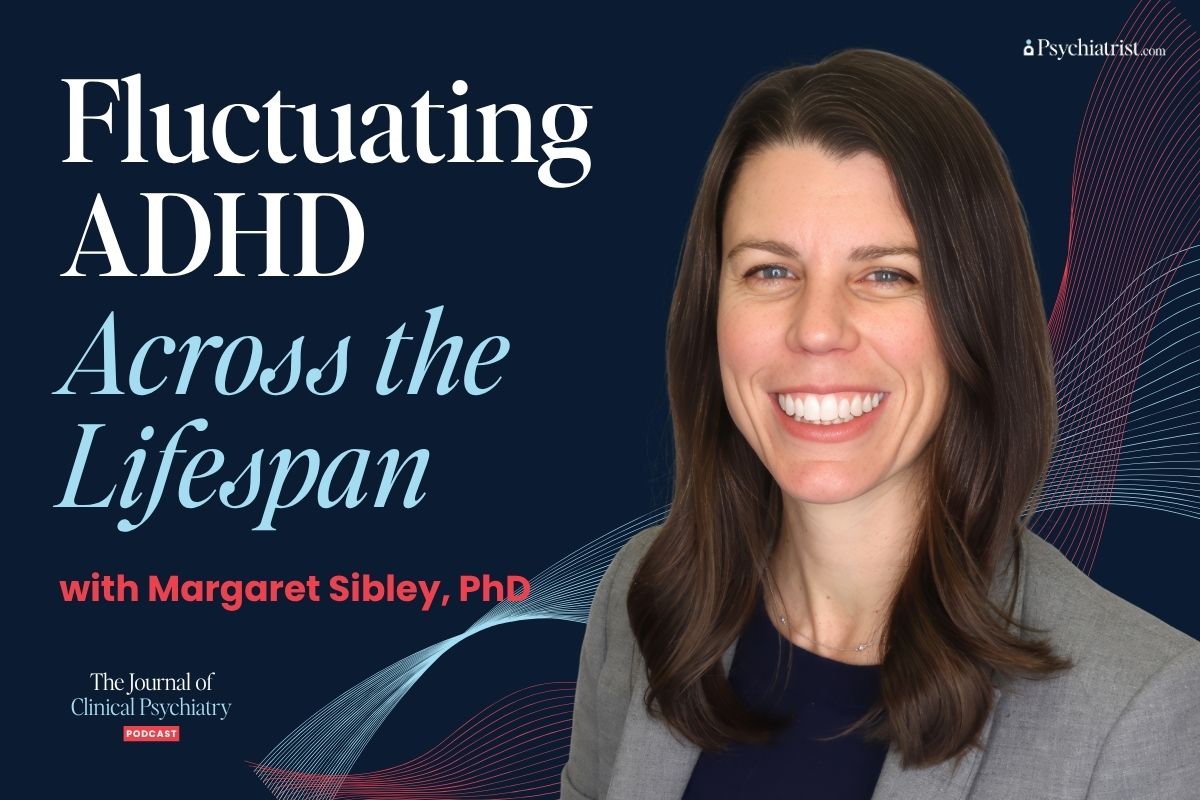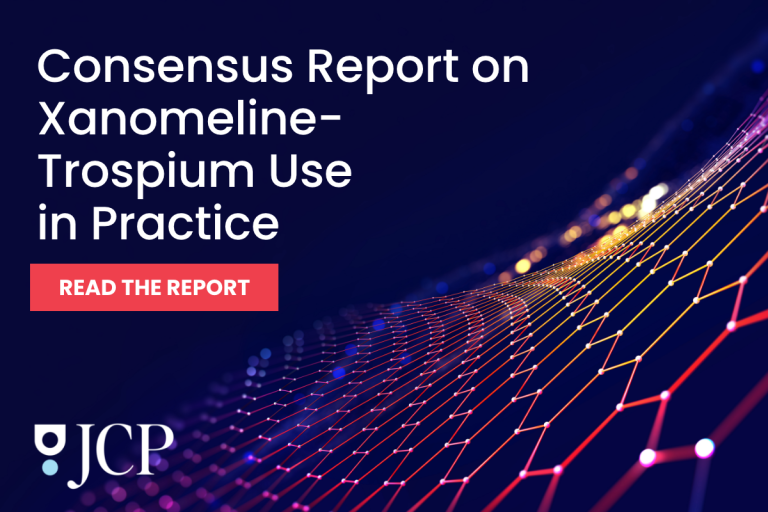
Abstract
Objective: The diagnosis of attention-deficit/hyperactivity disorder (ADHD) is based on a set of symptoms and 2 main dimensions (impulsive/hyperactive and attentional). While the relationships between ADHD symptoms and emotional dysregulation (ED) have been widely studied, the interactions between individual symptoms have rarely been examined. The purpose of this study was to assess which symptoms are most influential (central) and which symptoms connect (bridge) the 2 main dimensions of ADHD and ED.
Methods: Data from wave II (2004–2005) of the National Epidemiologic Survey on Alcohol and Related Conditions (NESARC-II) were utilized, which included a large, nationally representative sample of the US population (N=33,546). Eighteen ADHD symptoms were examined based on DSM-5-TR criteria, along with 4 variables related to ED. Symptom network analyses were conducted to explore the relationships between ADHD and ED symptoms.
Results: The prevalence of ADHD was found to be 10.12% (N=3,397). Among all ADHD and ED symptoms, ED symptoms had the lowest influence (centrality) values. In terms of bridging the 2 ADHD dimensions, 2 ED symptoms were among the 4 most influential.
Conclusions: The low centrality of ED symptoms supports the traditional focus on the 2 main dimensions of ADHD. However, the significant role of ED symptoms in connecting the impulsive/ hyperactive and attentional dimensions highlights their importance within the ADHD framework. These findings have potential implications for the epidemiology, public health, research, and clinical understanding of ADHD.
J Clin Psychiatry 2025;86(4):24m15287
Author affiliations are listed at the end of this article.
Members Only Content
This full article is available exclusively to Professional tier members. Subscribe now to unlock the HTML version and gain unlimited access to our entire library plus all PDFs. If you’re already a subscriber, please log in below to continue reading.
References (60)

- Faraone SV, Asherson P, Banaschewski T, et al. Attention-deficit/hyperactivity disorder. Nat Rev Dis Primers. 2015;1:15020. PubMed CrossRef
- Faraone SV, Sergeant J, Gillberg C, et al. The worldwide prevalence of ADHD: is it an American condition?. World Psychiatry. 2003;2(2):104–113. PubMed
- Sayal K, Prasad V, Daley D, et al. ADHD in children and young people: prevalence, care pathways, and service provision. Lancet Psychiatry. 2018;5(2):175–186. PubMed CrossRef
- Fayyad J, De Graaf R, Kessler R, et al. Cross-national prevalence and correlates of adult attention-deficit hyperactivity disorder. Br J Psychiatry. 2007;190:402–409. PubMed CrossRef
- Simon V, Czobor P, Bálint S, et al. Prevalence and correlates of adult attention-deficit hyperactivity disorder: meta-analysis. Br J Psychiatry. 2009;194(3):204–211. PubMed CrossRef
- Cortese S, Song M, Farhat LC, et al. Incidence, prevalence, and global burden of ADHD from 1990 to 2019 across 204 countries: data, with critical re-analysis, from the Global Burden of Disease study. Mol Psychiatry. 2023;28(11):4823–4830. PubMed CrossRef
- Kessler RC, Adler L, Barkley R, et al. The prevalence and correlates of adult ADHD in the United States: results from the National Comorbidity Survey Replication. Am J Psychiatry. 2006;163(4):716–723. PubMed CrossRef
- Song P, Zha M, Yang Q, et al. The prevalence of adult attention-deficit hyperactivity disorder: a global systematic review and meta-analysis. J Glob Health. 2021;11:04009. PubMed CrossRef
- Katzman MA, Bilkey TS, Chokka PR, et al. Adult ADHD and comorbid disorders: clinical implications of a dimensional approach. BMC Psychiatry. 2017;17(1):302. PubMed CrossRef
- Retz W, Retz-Junginger P, Thome J, et al. Pharmacological treatment of adult ADHD in Europe. World J Biol Psychiatry. 2011;12(suppl 1):89–94. PubMed CrossRef
- American Psychiatric Association. Diagnostic and Statistical Manual of Mental Disorders. 5th ed Revised. American Psychiatric Association; 2022.
- Barkley RA. International consensus statement on ADHD. Clin Child Fam Psychol Rev. 2002;5(2):89–111. PubMed CrossRef
- Bunford N, Evans SW, Wymbs F. ADHD and emotion dysregulation among children and adolescents. Clin Child Fam Psychol Rev. 2015;18(3):185–217. PubMed CrossRef
- Faraone SV, Rostain AL, Blader J, et al. Practitioner Review: emotional dysregulation in attention-deficit/hyperactivity disorder - implications for clinical recognition and intervention. J Child Psychol Psychiatry. 2019;60(2):133–150. PubMed CrossRef
- Martel MM. Research review: a new perspective on attention-deficit/ hyperactivity disorder: emotion dysregulation and trait models. J Child Psychol Psychiatry. 2009;50(9):1042–1051. PubMed CrossRef
- Shaw P, Stringaris A, Nigg J, et al. Emotion dysregulation in attention deficit hyperactivity disorder. Am J Psychiatry. 2014;171(3):276–293. PubMed CrossRef
- Able SL, Johnston JA, Adler LA, et al. Functional and psychosocial impairment in adults with undiagnosed ADHD. Psychol Med. 2007;37(1):97–107. PubMed CrossRef
- Surman CBH, Biederman J, Spencer T, et al. Understanding deficient emotional self-regulation in adults with attention deficit hyperactivity disorder: a controlled study. ADHD Atten Def Hyp Disord. 2013;5(3):273–281. PubMed CrossRef
- Hirsch O, Chavanon M, Riechmann E, et al. Emotional dysregulation is a primary symptom in adult Attention-Deficit/Hyperactivity Disorder (ADHD). J Affect Disord. 2018;232:41–47. PubMed CrossRef
- Thompson RA. Emotion regulation: a theme in search of definition. Monogr Soc Res Child Dev. 1994;59(2–3):25–52. PubMed CrossRef
- Barkley RA. The important role of executive functioning and self-regulation in ADHD. J Child Neuropsy. 2011;113(21):41–56.
- Martel MM, Levinson CA, Langer JK, et al. A network analysis of developmental change in ADHD symptom structure from preschool to adulthood. Clin Psychol Sci. 2016;4(6):988–1001. PubMed CrossRef
- Barkley RA. Attention-Deficit Hyperactivity Disorder: A Clinical Workbook. 2nd ed. The Guilford Press; 1998.
- Mitchell JT, Robertson CD, Anastopolous AD, et al. Emotion dysregulation and emotional impulsivity among adults with attention-deficit/hyperactivity disorder: results of a preliminary study. J Psychopathol Behav Assess. 2012;34(4):510–519. CrossRef
- Boyd CJ, West B, McCabe SE. Does misuse lead to a disorder? The misuse of prescription tranquilizer and sedative medications and subsequent substance use disorders in a U.S. longitudinal sample. Addict Behav. 2018;79:17–23. PubMed CrossRef
- Grant BF, Dawson DA, Stinson FS, et al. The 12-month prevalence and trends in DSM-IV alcohol abuse and dependence: United States, 1991–1992 and 2001–2002. Drug Alcohol Depend. 2004;74(3):223–234. PubMed CrossRef
- Moss HB, Chen CM, Yi HY. Prospective follow-up of empirically derived Alcohol Dependence subtypes in wave 2 of the National Epidemiologic Survey on Alcohol and Related Conditions (NESARC): recovery status, alcohol use disorders and diagnostic criteria, alcohol consumption behavior, health status, and treatment seeking. Alcohol Clin Exp Res. 2010;34(6):1073–1083. PubMed CrossRef
- Cortese S, Faraone SV, Bernardi S, et al. Gender differences in adult attention-deficit/hyperactivity disorder: results from the national epidemiologic survey on alcohol and related conditions (NESARC). J Clin Psychiatry. 2016;77(4):e421–e428. PubMed CrossRef
- De Alwis D, Lynskey MT, Reiersen AM, et al. Attention-deficit/hyperactivity disorder subtypes and substance use and use disorders in NESARC. Addict Behav. 2014;39(8):1278–1285. PubMed CrossRef
- Peyre H, Hoertel N, Cortese S, et al. Long-term effects of ADHD medication on adult height: results from the NESARC. J Clin Psychiatry. 2013;74(11):1123–1124. PubMed CrossRef
- Bernardi S, Faraone SV, Cortese S, et al. The lifetime impact of attention deficit hyperactivity disorder: results from the National Epidemiologic Survey on Alcohol and Related Conditions (NESARC). Psychol Med. 2012;42(4):875–887. PubMed CrossRef
- Baek JH, Eisner LR, Nierenberg AA. Epidemiology and course of unipolar mania: results from the national epidemiologic survey on alcohol and related conditions (NESARC). Depress Anxiety. 2014;31(9):746–755. PubMed CrossRef
- Grant BF, Dawson DA, Stinson FS, et al. The Alcohol Use Disorder and Associated Disabilities Interview Schedule-IV (AUDADIS-IV): reliability of alcohol consumption, tobacco use, family history of depression and psychiatric diagnostic modules in a general population sample. Drug Alcohol Depend. 2003;71(1):7–16. PubMed CrossRef
- Grant BF, Dawson DA. Introduction to the national epidemiologic survey on alcohol and related conditions. Alcohol Res Health. 2006;29(2):74–78.
- Carragher N, Krueger RF, Eaton NR, et al. ADHD and the externalizing spectrum: direct comparison of categorical, continuous, and hybrid models of liability in a nationally representative sample. Soc Psychiatry Psychiatr Epidemiol. 2014;49(8):1307–1317. PubMed CrossRef
- Ruan WJ, Goldstein RB, Chou SP, et al. The alcohol use disorder and associated disabilities interview schedule-IV (AUDADIS-IV): reliability of new psychiatric diagnostic modules and risk factors in a general population sample. Drug Alcohol Depend. 2008;92(1–3):27–36. PubMed CrossRef
- Bringmann LF, Elmer T, Epskamp S, et al. What do centrality measures measure in psychological networks? J Abnorm Psychol. 2019;128(8):892–903. PubMed CrossRef
- Epskamp S, Borsboom D, Fried EI. Estimating psychological networks and their accuracy: a tutorial paper. Behav Res. 2018;50(1):195–212. PubMed CrossRef
- American Psychiatric Association. Diagnostic and Statistical Manual of Mental Disorders. 3rd ed. Amer Psychiatric Pub Inc; 1980.
- Biederman J, Faraone S, Milberger S, et al. Predictors of persistence and remission of ADHD into adolescence: results from a four-year prospective follow-up study. J Am Acad Child Adolesc Psychiatry. 1996;35(3):343–351. PubMed CrossRef
- Hart EL, Lahey BB, Loeber R, et al. Developmental change in attention-deficit hyperactivity disorder in boys: a four-year longitudinal study. J Abnorm Child Psychol. 1995;23(6):729–749. PubMed CrossRef
- Wilens TE, Biederman J, Faraone SV, et al. Presenting ADHD symptoms, subtypes, and comorbid disorders in clinically Referred adults with ADHD. J Clin Psychiatry. 2009;70(11):1557–1562. PubMed CrossRef
- Haslbeck JMB, Waldorp LJ. How well do network models predict observations? On the importance of predictability in network models. Behav Res. 2018;50(2):853–861. PubMed CrossRef
- Stringaris A. Irritability in children and adolescents: a challenge for DSM-5. Eur Child Adolesc Psychiatry. 2011;20(2):61–66. PubMed CrossRef
- Stringaris A, Goodman R, Ferdinando S, et al. The Affective Reactivity Index: a concise irritability scale for clinical and research settings. J Child Psychol Psychiatry. 2012;53(11):1109–1117. PubMed CrossRef
- Nigg JT, Casey BJ. An integrative theory of attention-deficit/ hyperactivity disorder based on the cognitive and affective neurosciences. Dev Psychopathol. 2005;17(3):785–806. PubMed CrossRef
- Castellanos FX, Proal E. Large-Scale Brain Systems in ADHD: beyond the Prefrontal-Striatal Model. Trends Cogn Sci. 2012;16(1):17–26. PubMed CrossRef
- Posner J, Kass E, Hulvershorn L. Using Stimulants to Treat ADHD-Related Emotional Lability. Curr Psychiatry Rep. 2014;16(10):478. PubMed CrossRef
- Lenzi F, Cortese S, Harris J, et al. Pharmacotherapy of emotional dysregulation in adults with ADHD: a systematic review and meta-analysis. Neurosci Biobehav Rev. 2018;84:359–367. PubMed CrossRef
- Surman CBH, Biederman J, Spencer T, et al. Deficient emotional self-regulation and adult attention deficit hyperactivity disorder: a family risk analysis. Am J Psychiatry. 2011;168(6):617–623. PubMed CrossRef
- Biederman J, Spencer T, Lomedico A, et al. Deficient emotional self-regulation and pediatric attention deficit hyperactivity disorder: a family risk analysis. Psychol Med. 2012;42(3):639–646. PubMed CrossRef
- Barkley R. Deficient emotional self-regulation: a core component of attention-deficit/hyperactivity disorder. J ADHD Relat Disord. 2010.
- Seidman LJ, Valera EM, Makris N. Structural brain imaging of attention-deficit/ hyperactivity disorder. Biol Psychiatry. 2005;57(11):1263–1272. PubMed CrossRef
- Cuthbert BN. Research Domain Criteria: toward future psychiatric nosologies. Dialogues Clin Neurosci. 2015;17(1):89–97. PubMed CrossRef
- Morris SE, Cuthbert BN. Research Domain Criteria: cognitive systems, neural circuits, and dimensions of behavior. Dialogues Clin Neurosci. 2012;14(1):29–37. PubMed CrossRef
- Thorell LB, Tilling H, Sjöwall D. Emotion dysregulation in adult ADHD: introducing the comprehensive emotion regulation inventory (CERI). J Clin Exp Neuropsychol. 2020;42(7):747–758. PubMed CrossRef
- Borsboom D, Cramer AOJ, Kalis A. Brain disorders? Not really: why network structures block reductionism in psychopathology research. Behav Brain Sci. 2018;42:e2. PubMed CrossRef
- Miller DJ, Derefinko KJ, Lynam DR, et al. Impulsivity and attention deficit-hyperactivity disorder: subtype classification using the UPPS impulsive behavior scale. J Psychopathol Behav Assess. 2010;32(3):323–332. PubMed CrossRef
- Rosenthal EA, Broos HC, Timpano KR, et al. Does emotion-related impulsivity relate to Specific ADHD symptom dimensions, and do the Effects Generalize Across Comorbid Internalizing and Externalizing Syndromes? J Atten Disord. 2024;28(2):178–188. PubMed CrossRef
- Carver CS, Johnson SL, Joormann J, et al. Serotonin Transporter Polymorphism Interacts with childhood Adversity to predict aspects of impulsivity. Psychol Sci. 2011;22(5):589–595. PubMed CrossRef





